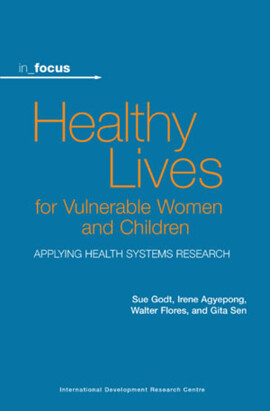
Acceptability and Use of Cereal-Based Foods in Refugee Camps
The fortification of cereal-based food rations is increasingly accepted to be the most efficient way of preventing micronutrient deficiencies in large refugee camps. Little is known, however, about the degree to which such foods are acceptable to refugees, or how they actually use them. These factors are important in considering how, and when the foods are fortified, before, during and after distribution. This working paper reports on field-based research into these questions. The conclusions are presented in a general summary report, which is supported by three detailed case studies.
Published: 1998
Pages: 136
eBook: 9780855986469
| Acknowledgements | |||
|---|---|---|---|
| Preface | |||
| Executive Summary | |||
| Abbreviations | |||
| Main report | |||
| Introduction | |||
| Methodology | |||
| Cereal fortification and blended food | |||
| Food and nutrition in the study sites | |||
| The 'pragmatics of preference' | |||
| The use of food and micronutrients | |||
| What made food 'acceptable'? | |||
| Cereal fortification at the regional, camp, and household levels | |||
| Conclusions | |||
| Appendices: | |||
| Methods | |||
| Fortified pre-cooked blended food: definitions and examples | |||
| Prices, nutritional values, and unit cost of WFP-supplied commodities, January 1997 | |||
| Composition and nutritional analysis of planned rations | |||
| Case-study: Bhutanese refugees in Nepal (January/February 1997) | |||
| The context | |||
| The field study | |||
| Conclusion | |||
| Appendices: | |||
| Map of Jhapa and Morang Districts | |||
| Age and gender composition of camp population | |||
| Market prices at time of study | |||
| The proces of parboiling rice | |||
| List of key informants and interviewees | |||
| Case-study: Somali refugees in Ethiopia | |||
| The context | |||
| The field study | |||
| Conclusion | |||
| Appendices: | |||
| Ethiopia: regions and zones | |||
| Location of camps, Somali Region | |||
| Characteristics of teh refugee population | |||
| Refugee numbers | |||
| Market prices at time of study | |||
| Chronology of malnutrition and micronutrient deficiencies | |||
| List of key informants and interviewees | |||
| Case-study: Burundian refugees in Tanzania | |||
| The context | |||
| The field study | |||
| Conclusion | |||
| Appendices: | |||
| Map: Kigoma Region and location of camps | |||
| Age and sex composition of population, Muyovosi camp | |||
| Refugees Statistics Report on Registration, Kigoma Region, July 1997 | |||
| Summary of food ration scales and kilo calories, January-August 1997 | |||
| Proposed milling set-up, Isaka | |||
| List of key informants and interviewees | |||
| Glossary | |||
| References |
Catherine Mears
Catherine Mears has worked in the field of public health in emergencies for several years. She is the co-author of Health Care for Refugees and Displaced People, published by Oxfam GB in 1994.
Helen Young
Helen Young leads the Darfur Livelihoods Programme at the ODI, which combines research, capacity development and institutional change. As a Research Fellow at the Overseas Development Institute, in Sussex, she reviewed nutritional assessment and response to situations of food insecurity and famine.
Nutritional Risk Factors for Older Refugees
Pieterse, Simone
Ismail, Suraiya
Disasters, Vol. 27 (2003), Iss. 1 P.16
https://doi.org/10.1111/1467-7717.00217 [Citations: 21]Meeting the challenges of micronutrient deficiencies in emergency-affected populations
Prinzo, Z. Weise
de Benoist, B.
Proceedings of the Nutrition Society, Vol. 61 (2002), Iss. 2 P.251
https://doi.org/10.1079/PNS2002151 [Citations: 54]Protein quality of drum‐processed cereal–bean–sardine composite supplementary foods for preschool‐age children
Mosha, Theobald CE
Bennink, Maurice R
Journal of the Science of Food and Agriculture, Vol. 84 (2004), Iss. 10 P.1111
https://doi.org/10.1002/jsfa.1756 [Citations: 4]Food aid in emergencies: a case for wheat?
Landman, Jacqueline
Proceedings of the Nutrition Society, Vol. 58 (1999), Iss. 2 P.355
https://doi.org/10.1017/S0029665199000476 [Citations: 4]Beyond the ‘raw’ and the ‘cooked’: a history of fortified blended foods
Scott‐Smith, Tom
Disasters, Vol. 39 (2015), Iss. s2
https://doi.org/10.1111/disa.12156 [Citations: 12]




